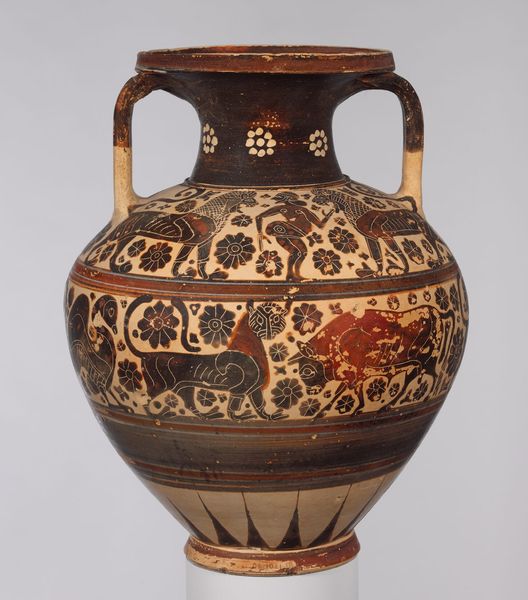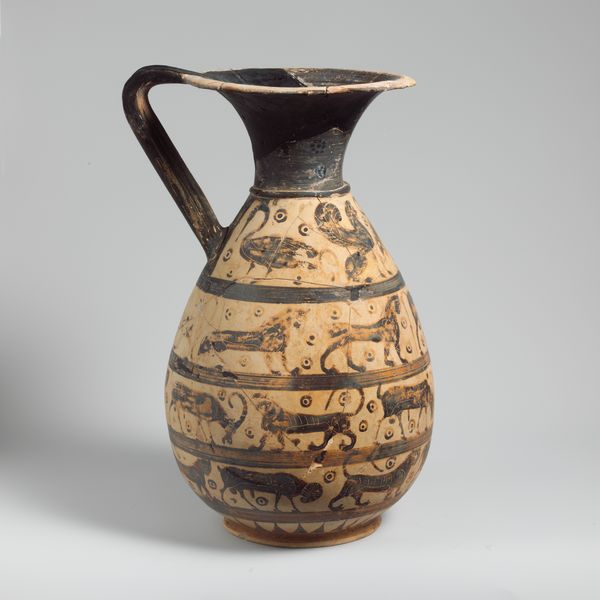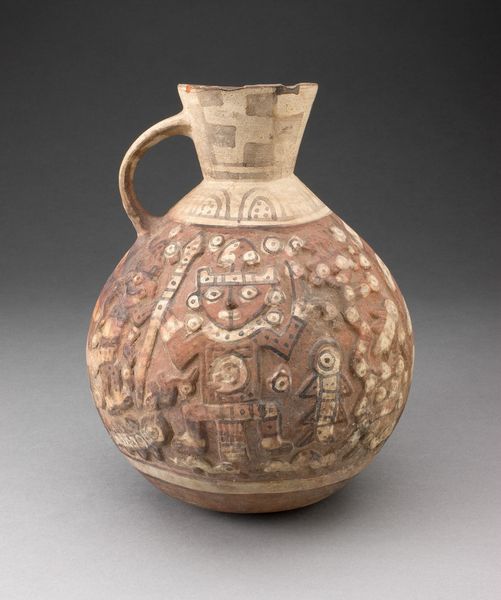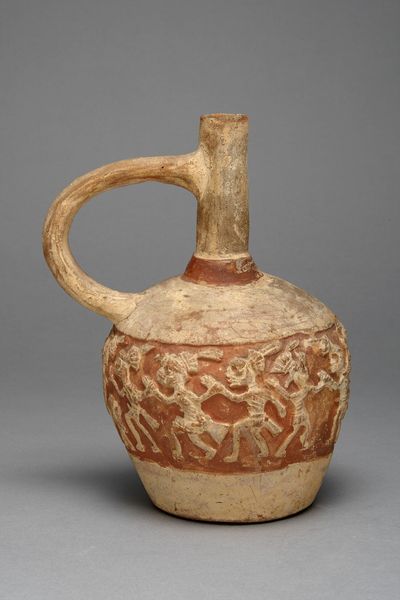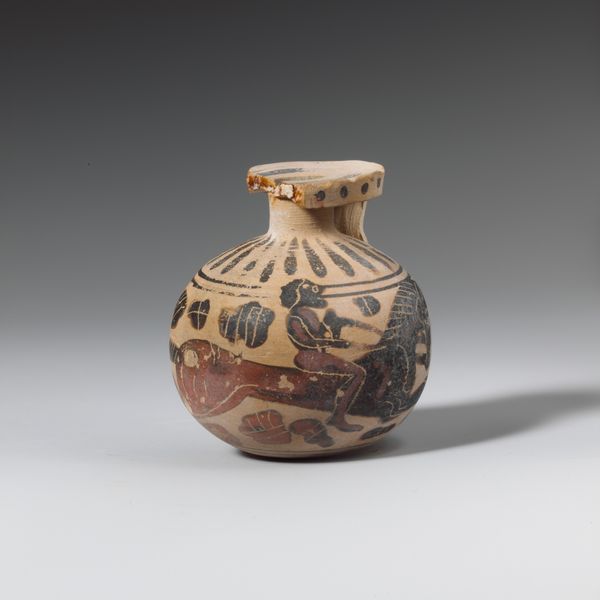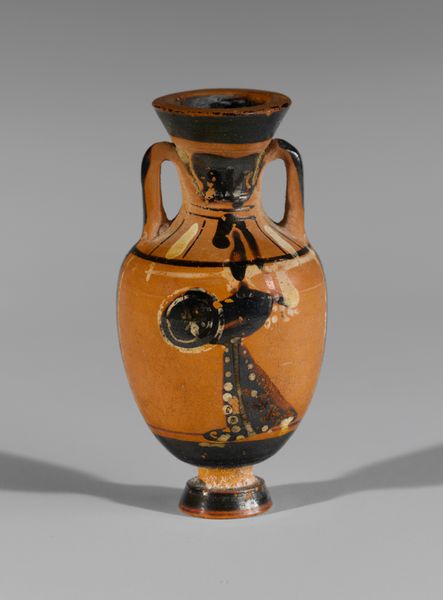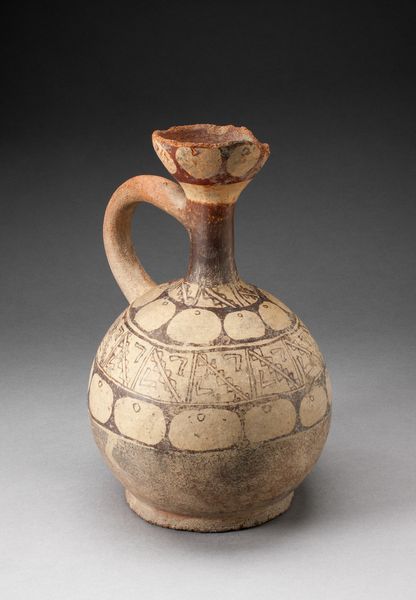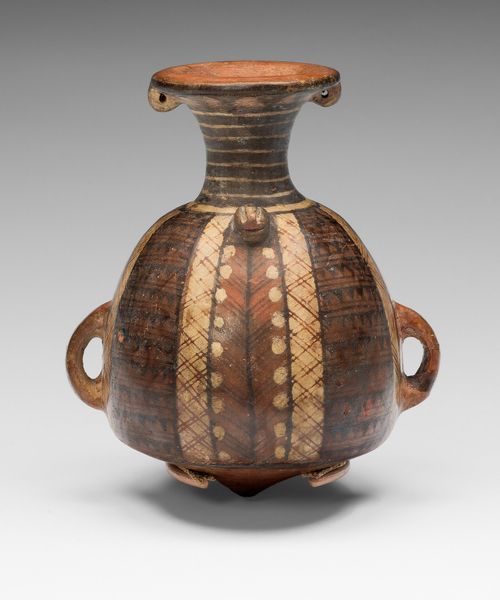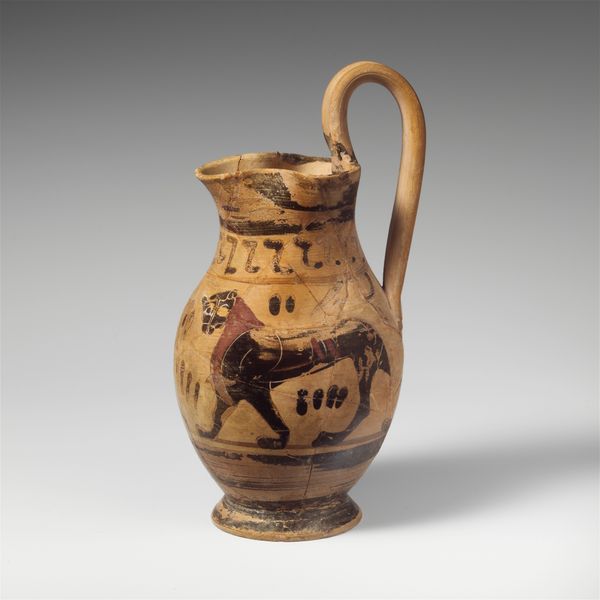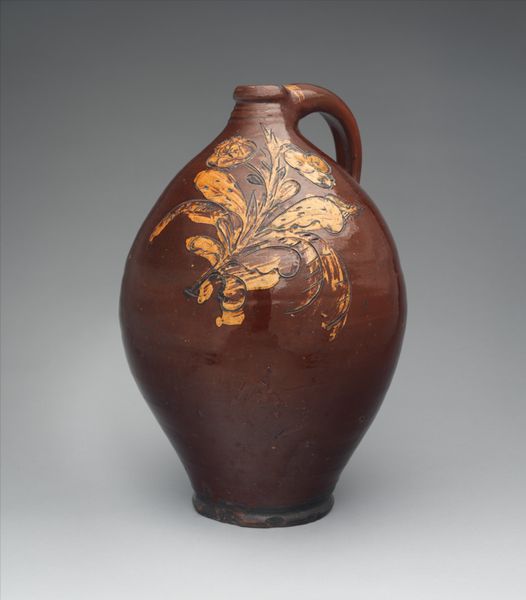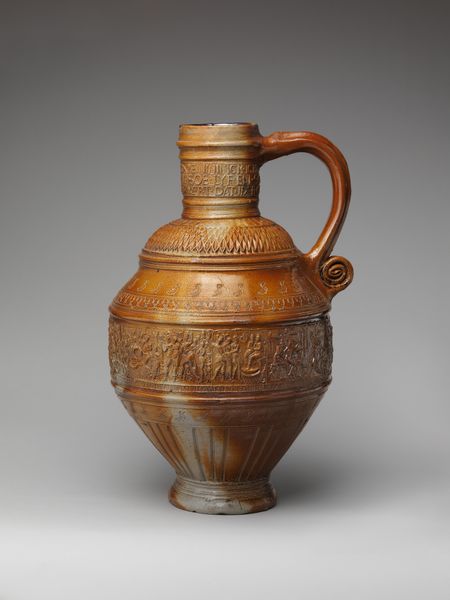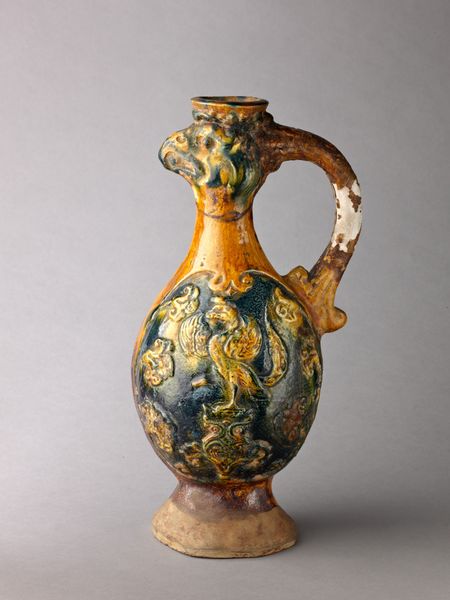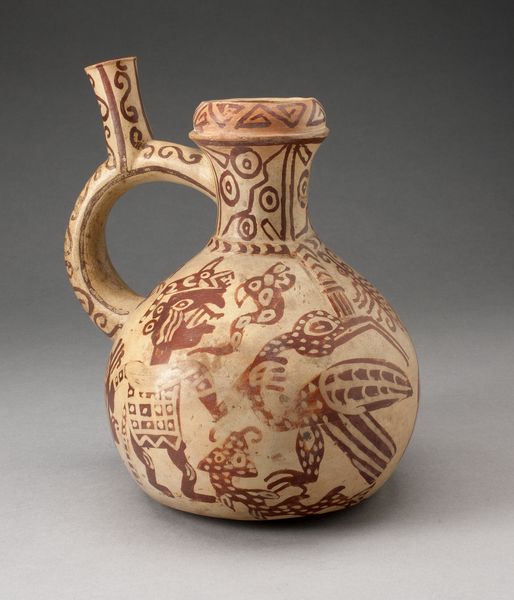
Dimensions: Height: 12 5/8 in. (32.1 cm)
Copyright: Public Domain
Curator: Let's consider this Harvest jug, crafted from earthenware sometime between 1776 and 1786. Currently residing at The Met, its form and decoration offer an interesting viewing experience. Editor: Immediately, I'm struck by the warm, earthy tones and the rather whimsical, almost fairytale-like quality it possesses. There’s a sense of rural life imbued in its very design. Curator: Indeed. The slipware technique, where the jug is coated in a liquid clay slip to create patterns and images, speaks volumes about process. Note how the sgraffito method—scratching through the slip to reveal the darker clay beneath— defines each floral motif, each sinuous leaf, and brings that curious lion to life. Editor: Speaking of that lion, it’s far from the regal predator we might expect. There’s something almost human and endearingly awkward in its depiction, suggesting perhaps a more satirical or allegorical intent. Perhaps it represents something or someone? Curator: The Baroque style influences this, particularly the interest in texture and the ornate detail, like the patterned band near the top. The potter shows real control over line and form; see how the curve of the handle and body create a harmonious whole, unified by the repeating colors and motifs. Editor: It begs the question, who was this made for, and under what circumstances? The "harvest" in the name points to a connection with agrarian life, but the skilled execution of the sgraffito and the inclusion of that odd heraldic lion pushes beyond mere utility, indicating this was commissioned and possibly displayed? This also makes me wonder about England's place within a broader network of global trade at that time. Curator: Precisely! These material choices were likely intended to make a jug that was robust enough for storing the byproducts of a plentiful season and doing so in an orderly and tasteful way. Editor: This reminds us of the importance of art existing at the crossroads of different social and intellectual histories, and the many things the piece continues to raise in contemporary conversations. Curator: And by engaging with this jug on both aesthetic and contextual levels, we gain not only an understanding of art history but also a broader and potentially clearer vision of our modern reality. Editor: Absolutely. Each of us should take away whatever details best enable further thinking about craft, context, and continuity.
Comments
No comments
Be the first to comment and join the conversation on the ultimate creative platform.
